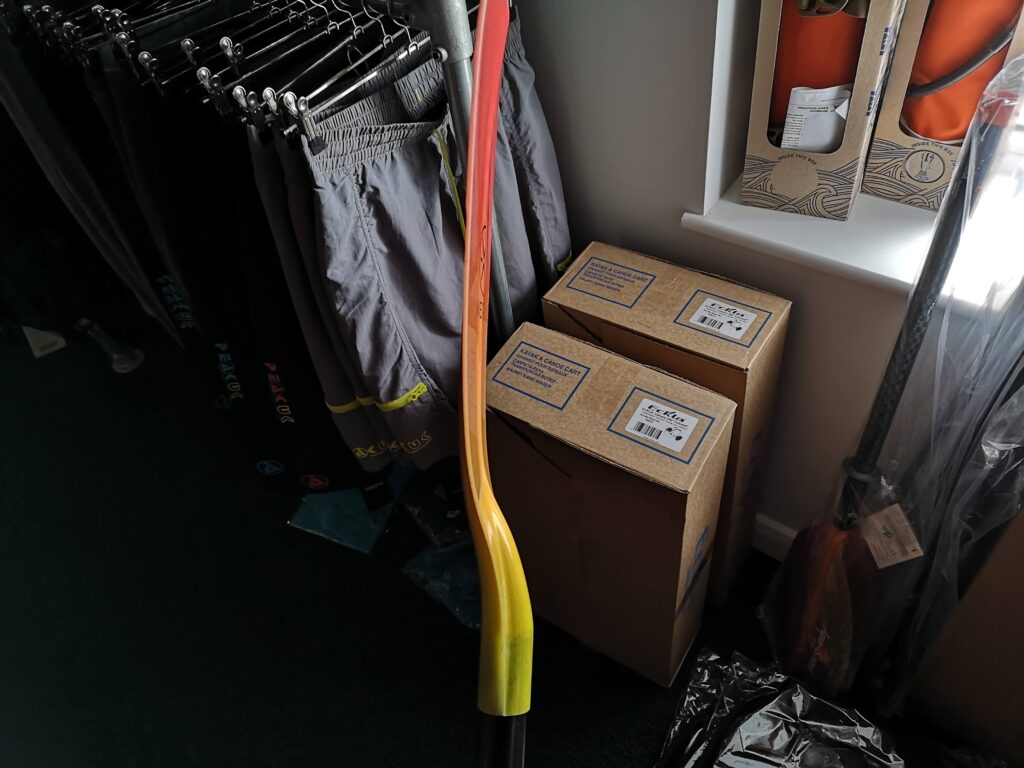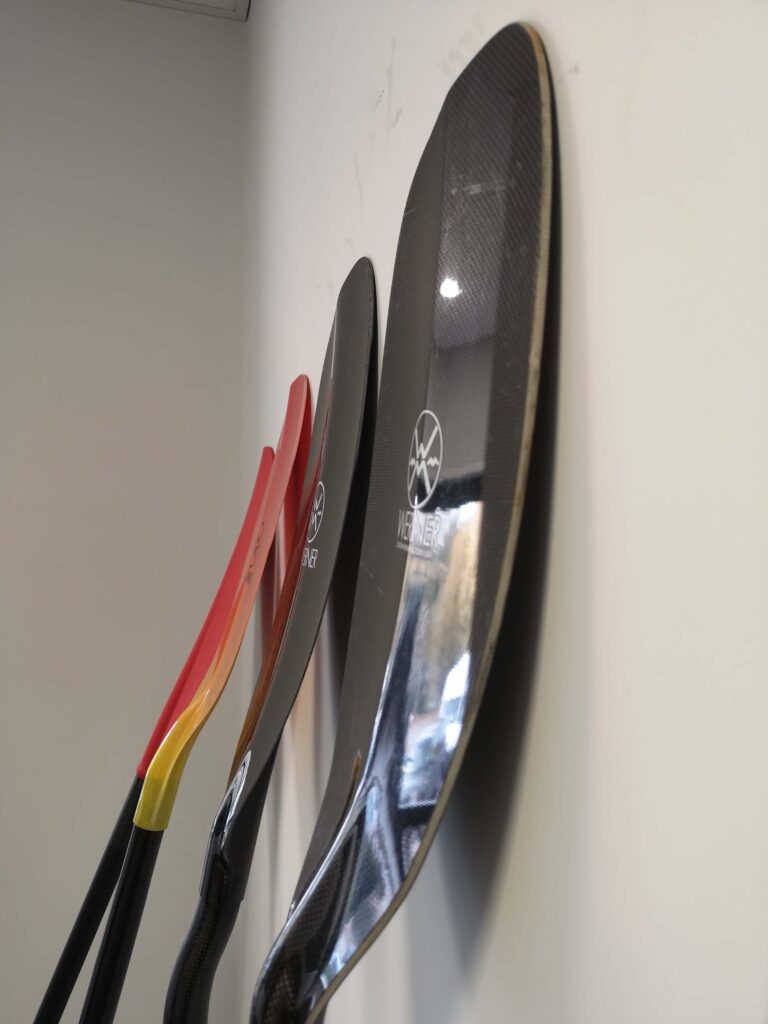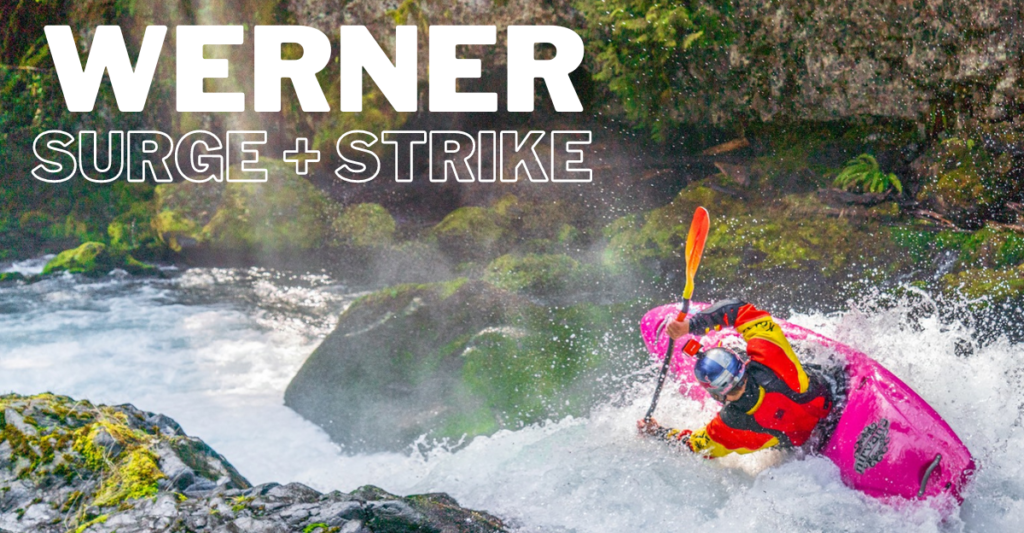Things to think about when choosing a white-water paddle

With the big C word just around the corner and a fresh shipment of Werner white water paddles on the way (this could be the last for a while though…) we thought we’d go over a few of the key features that you’ll want to consider when choosing the paddle for you.
Blade Shape and Size
While blade shape does not vary massively between modern white-water paddles, particularly when compared to paddles used for sea kayaking and open canoeing, there are subtle differences. The most notable of the current Werner crop being the blade to shaft offset of the Surge and Strike.

The size of the blade you go for is also down to several factors. Opting for a bigger blade, such as the Werner Powerhouse or Werner Surge, will give you more power through each stroke, greater resistance for support strokes and a greater surface area to rely on for rolling. This extra resistance does however come with an increased risk of fatigue and as such a drop in technique which can result in muscle tweaks and other injuries.

If you are either prone to injury or a smaller paddler then it is worth opting for the smaller to medium sized blades, such as the Werner Sherpa or Werner Strike. These blades pull through the water much easier and will allow you to paddle for longer before feeling fatigued or aggravating any pre-existing niggles.
Construction
There are two key components to a paddle: the blades and the shaft. Shafts are usually made of aluminium, fibreglass, or carbon. Entry level paddles such as the TNP Rapa Duralium make for a great cost-effective option, however the performance benefits of the lighter, stiffer shafts are significant.

When looking at paddle options you will typically find the blades are made of either nylon, fibreglass, carbon, or a foam core carbon blade. Nylon blades again make for a great cost-effective entry point but is the heaviest and has the most flex.
Fibreglass blades are always an extremely popular choice as they are durable, light, and quite stiff but will flex under strain. You have probably seen a few Powerhouses and Sherpas that have worn away at the ends a bit. This is due to the blades chipping, rather than shattering which can happen on the much stiffer blades. The slight flex you get in glass blades does also help reduce some of the impact on your joints during longer paddles or when you get caught in a particularly awkward support stroke (apparently we’re not meant to say high brace anymore?).

While there is not a significant weight benefit to going for a full carbon blade, there is a performance benefit. Due to the blade being stiffer it is therefore more responsive as well as provides a more direct transfer of power; less of the power you put through the blade is lost through the blade flexing.
Carbon blades with a foam core offer the greatest level of performance: the foam core makes the blade more buoyant meaning they perform far better in aerated water than other blades. Unfortunately, the downside to this increased performance is a decrease in impact resistance, so if you spend most of your time paddling down boney rivers or shallow creeking then a glass blade might be the option for you.
Crank shaft or straight shaft
This is one of those questions that will likely get quite a polarized answer depending on who you ask at your local club!
Crank shafts can loosely be broken down into two categories, ergonomic cranks and power cranks. An ergonomic shaft, like the Werner Neutral Bent Shaft, is deigned to put less stress on your wrists and elbows by allowing you to hold the shaft in a more natural position, all while having the blade sit along the same line as it would on a straight shaft paddle. One element of a crank shaft that always appeals to paddlers is the confidence to know where to put your hands and which way the blade is orientated (particularly useful when you are upside down!). The ergonomic crank is particularly good at easing wrist and forearm strain if you have a habit of over gripping your paddle.
A power crank is what you will often see on competition and top spec paddles, such as the Lettmann Ergonom Extrem, as it positions the blade forward of the hand, allowing for a more efficient forward paddling stroke.
For the majority of people, a straight shaft paddle is perfectly fine. By using a nice, loose grip you can prevent your wrists from developing niggles and your forearms blowing up. It also allows the paddler to adjust their hand position more, for example my hand position sits narrower than it would be able to on a crank shaft. A further consideration for those with shoulder niggles is that a straight shaft has more flex than a crank, meaning it is more forgiving on the body.
Length and Feather
The length paddle you choose will be dependent on both your size and what style of paddling it is that you are doing: if you are mainly surfing and freestyle paddling you will likely want a paddle that is a bit shorter than if you are river running and creeking. Werner have an excellent and comprehensive size guide to help you measure up.
As for feather a higher feather paddle will encourage more trunk rotation and a higher angle paddling stroke, while a lower feather will suit those with a lower angle stroke as well as those doing lots of freestyle.
Well there it is, a brief summary of things to consider when looking at a new white-water paddle. See you on the river!


Comments
Powered by Facebook Comments